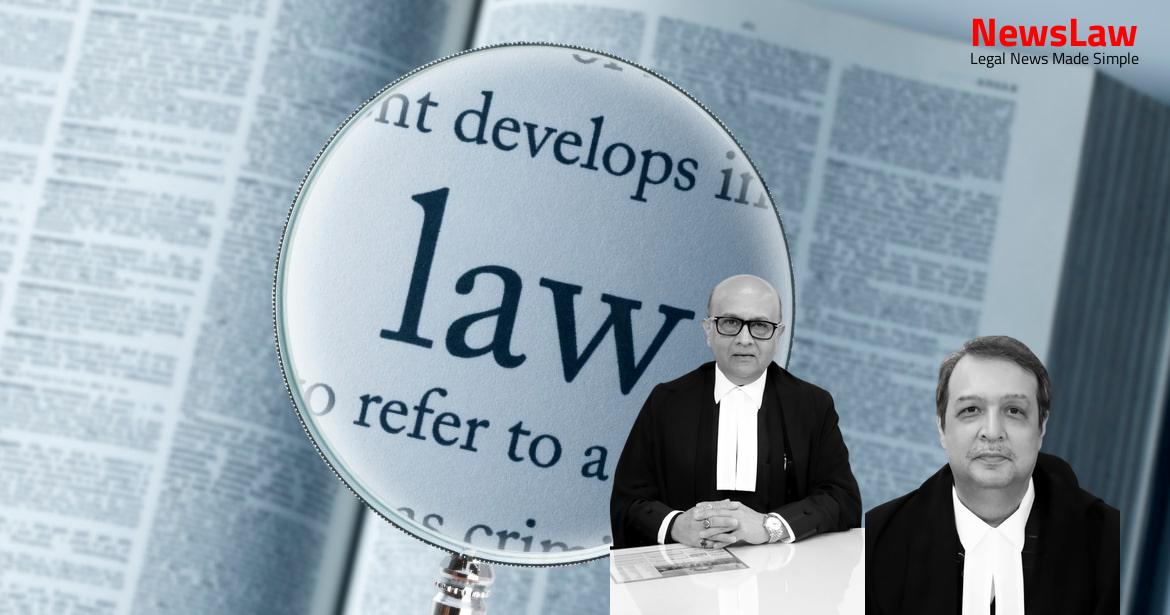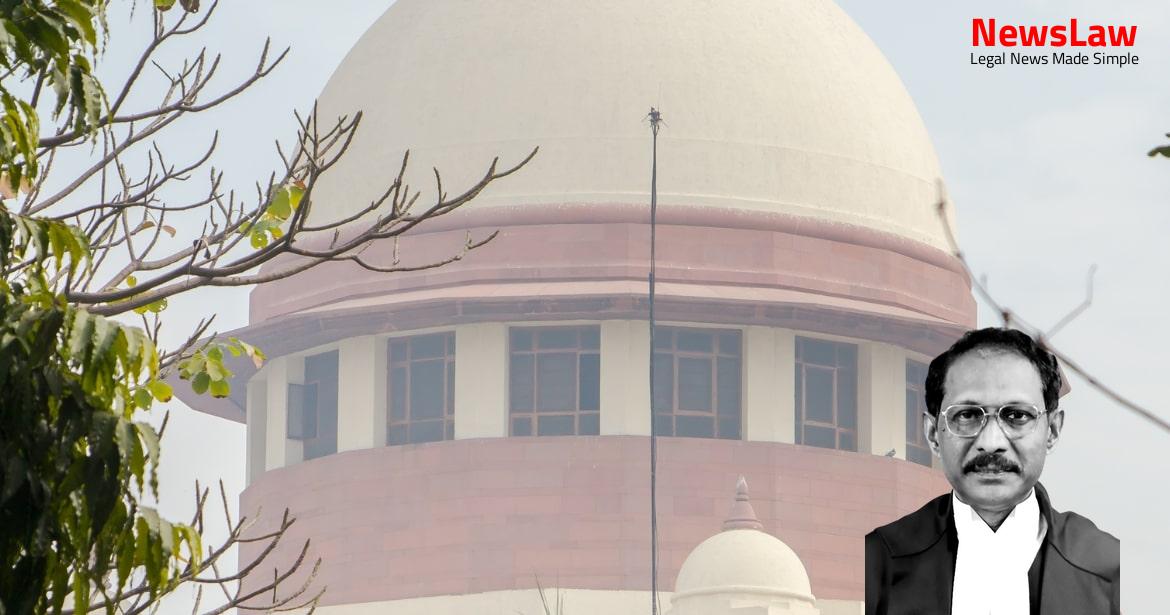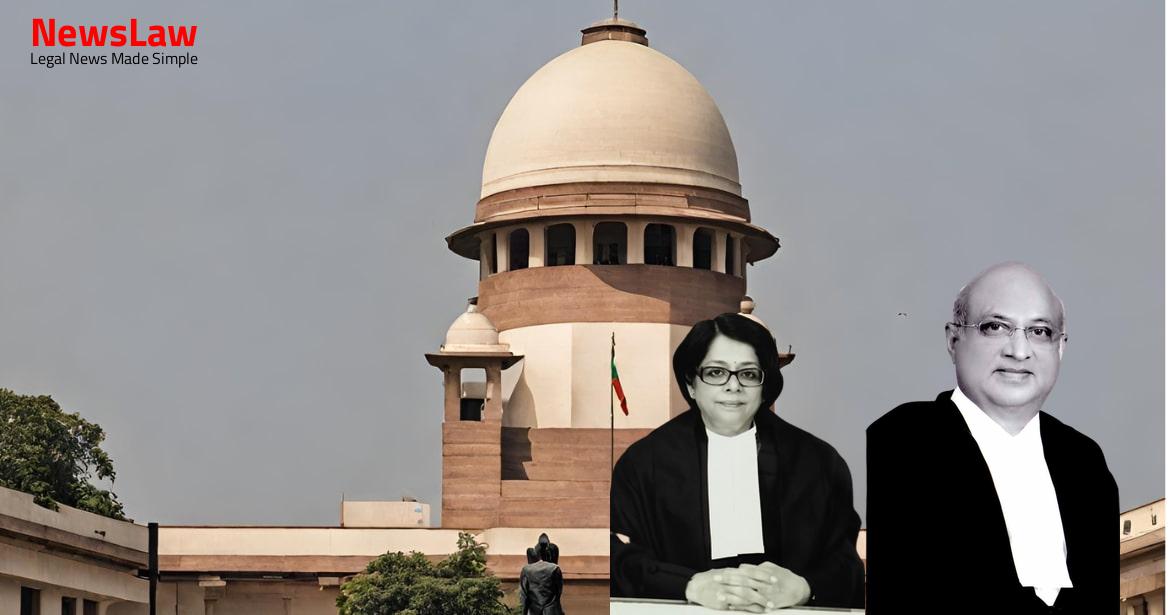In a recent legal battle concerning judicial promotions, the High Court has affirmed its decision on the imposition of a minimum eligibility cut-off. The case involved various senior counsels and unsuccessful officers challenging the requirement of obtaining 50% marks individually in the written test. Stay tuned to learn more about this significant judgment!
Facts
- The High Court of Punjab and Haryana responded to the communication of the State Government on 22 March 2023 regarding the appointment of Additional District and Sessions Judges.
- A writ petition was filed by candidates working as Civil Judges and Chief Judicial Magistrates in Haryana seeking a mandamus for the State Government to conclude the selection process and notify the appointments of Additional District and Sessions Judges by promotion.
- The State Government sought the opinion of the Union Ministry of Law and Justice after receiving a representation challenging the High Court’s recommendations.
- The Union Ministry opined that the High Court’s modification of the suitability criteria lacked consultation with the State Government and thus was not binding.
- The High Court conducted a written test for promotion followed by a viva voce as part of the process.
- The Rules came into force on 10 January 2007 and regulate recruitment and service conditions of persons for appointment to the Haryana Superior Judicial Service.
- A communication was addressed by the Chief Secretary to the Government of Haryana to the Registrar (Judicial) seeking justification/clarification regarding certain judicial officers of the 2007, 2009, and 2010 batches who appeared senior but were not recommended for promotions.
- The Full Court Resolution of 29 January 2013 required candidates to obtain at least 50% marks in the written test and viva voce combined, while the proposal of the Recruitment and Promotion Committee of 11 November 2021 stipulated a 50% mark requirement for each separately.
- Definitions of ‘promoted officer’ and ‘direct recruit’ were provided under Rule 2 of the Haryana Superior Judicial Service Rules 2007.
- Candidates were seeking recruitment through promotions from the post of Senior Civil Judges against the 65% promotional quota.
- The High Court considered the Annual Confidential Reports of the preceding five years for each officer under consideration.
- The recommendation dispute arose from the administrative side of the High Court for the appointment of thirteen in-service candidates as Additional District and Sessions Judges.
- A resolution required a written objective test and a viva voce to assess the legal knowledge and efficiency of the candidates, which was approved by the Full Court on 30 November 2021.
- Recruitment to the Service was to be made by the Governor through promotion and direct recruitment as per Rules 5 and 6.
- Uniformity in promotions to the Superior Judicial Service was enforced through amendments by the States of Haryana and Punjab.
- Various rules including limited competitive examinations for promotion and procedures for promotions were outlined in Rules 7, 8, and 9.
- Modifications in the benchmark for assessing the ACRs of candidates under Rule 8 were proposed by the Committee.
Also Read: Protecting LGBTQ+ Rights: Supreme Court’s Landmark Judgment on Habeas Corpus Petitions
Arguments
- The unsuccessful officers argued that there is no legal basis for imposing a minimum eligibility cut-off of obtaining 50% marks individually in the written test.
- Recruitment by promotion under Rule 6(1)(a) is based on merit-cum-seniority and passing a suitability test, while under Rule 6(1)(b) it is based on merit through a limited competitive examination with 5 years of qualifying service as Civil Judges.
- Various senior counsels supported or opposed the imposition of minimum marks for interviews and argued about the discriminatory nature of the imposed criteria.
- There were arguments about the administrative power of the High Court in the appointment of District Judges and the necessity of consultation with the State Government.
- The Resolution of the Full Court dated 30 November 2021 imposing a 50% eligibility requirement was contested as discriminatory and lacking consultation.
- Discrepancies were highlighted in the requirements for different modes of recruitment to the Higher Judicial Service.
Also Read: Interpretation of Parliamentary Privileges: Immunity from Prosecution for Bribery
Analysis
- Rule 9 provides a detailed procedure for a limited competitive examination while implementing Rule 6(1)(b) in a mandatory sense.
- In K H Siraj v. High Court of Kerala, the issue of minimum marks for the oral examination as eligibility for selection as Munsif Magistrate was challenged.
- The constitutional importance of the independence of the Judiciary and separation of powers was emphasized in State of Bihar v. Bal Mukund Sah.
- The Kerala State Higher Judicial Services Rules 1961 specify the criteria for direct recruitment from the Bar.
- The interview for officers in this class assesses their ability for the role of Additional District and Sessions Judge, emphasizing merit over seniority.
- The discretion of the High Court in conducting written tests and viva voce for promotions is indicated in Rule 8 through the use of ‘may’.
- The Rules do not specify a minimum eligibility criteria for competitive tests or viva voce, allowing the High Court to decide based on aggregate marks.
- The consultation process with the High Court is essential for the appointment of District Judges under Article 233.
- Different avenues for in-service officers to enter the Superior Judicial Service are outlined, including limited competitive exams and promotion based on merit or merit-cum-seniority.
- The examination and appointment process of judicial officers, particularly for District Judiciary, is discussed in detail with a focus on maintaining quality and merit-based promotions.
- The importance of consultation with the High Court for judicial appointments is highlighted in various judgments.
- Different sources of recruitment to the Higher Judicial Service are specified along with the quota percentages and criteria.
- The significance of merit and seniority in the promotion process is emphasized to ensure the selection of competent judicial officers.
- The High Court’s decision to set a minimum cut-off for viva voce was legally sound and aligned with the merit-based recruitment process.
- Articles 233, 234, and 235 of the Constitution play a crucial role in appointing District Judges and ensuring consultation with the High Court.
- The objective of promoting in-service officers through competitive examinations is to enhance the caliber of individuals recruited into the Higher Judicial Service.
- The need for a balance between written tests, viva voce, and assessment of legal knowledge and communication skills is stressed for the selection of capable judicial officers.
- The importance of interviews and setting minimum passing marks for selection to maintain judiciary standards was underscored in various cases.
- Recruitment through regular promotion is distinct from promotion based on limited competitive examination.
- The Shetty Commission recommended imposing a cut-off to avoid subjectivity.
- High Courts can issue administrative directions consistent with Rules when silent.
- Silence in Rules allows High Courts to issue Full Court Resolutions for guidance.
- In-service judicial officers need to demonstrate practical knowledge and law application in interviews.
- Different routes of recruitment for the same post have different testing requirements.
- High Courts have administrative authority to determine merit and suitability where Rules are silent.
- Merit-cum-seniority principle applies to 65% of posts in Higher Judicial Service under Rule 6(1)(a).
- Administrative instructions can supplement Rules for determining merit in Rule 6(1)(a) and Rule 8.
- High Courts can impose a minimum cut-off for eligibility in written and viva voce tests.
- The reservation for SC/ST candidates was specified for qualifying marks.
- Gaps in Rules can be filled by administrative instructions as long as they do not contradict statutory provisions.
- Rules differentiate between competitive exams under Rule 6(1)(b) and direct recruitment exams.
- The consultation for judicial appointments must involve the High Court and the State Government.
- High Courts have control over Subordinate Courts as per Article 235 of the Constitution.
- Emphasis on merit over seniority cautioned for promotion of judicial officers.
- High Courts have the discretion to conduct examinations under the Rules.
- Consultation with the High Court is essential for rules under Articles 234, 235, and 309.
- Examinations under Rules serve to assess legal knowledge and efficiency.
- In-service candidates are evaluated based on tests and service records for promotion.
- Limited competitive exams for promotions based strictly on merit and qualifying service.
- High Courts’ resolutions modifying earlier terms are binding when aligned with Rules.
- State Government found fault with the process followed by the High Court
- State Government’s conclusion of the High Court’s decision being arbitrary was deemed incorrect
- The expressions ‘arbitrary’ and ‘betrayal of trust’ used by the State Government were noted but not further addressed
- The High Court’s decision was affirmed as valid
Also Read: Legal Analysis on Arbitration Petition Limitation Period
Decision
- The judgment and order of the High Court dated 20 December 2023 are deemed legally sound.
- The appeals have been dismissed on the grounds of no legal or other infirmity in the High Court’s decision.
Case Title: DR. KAVITA KAMBOJ Vs. HIGH COURT OF PUNJAB AND HARYANA (2024 INSC 192)
Case Number: C.A. No.-002179-002180 / 2024



